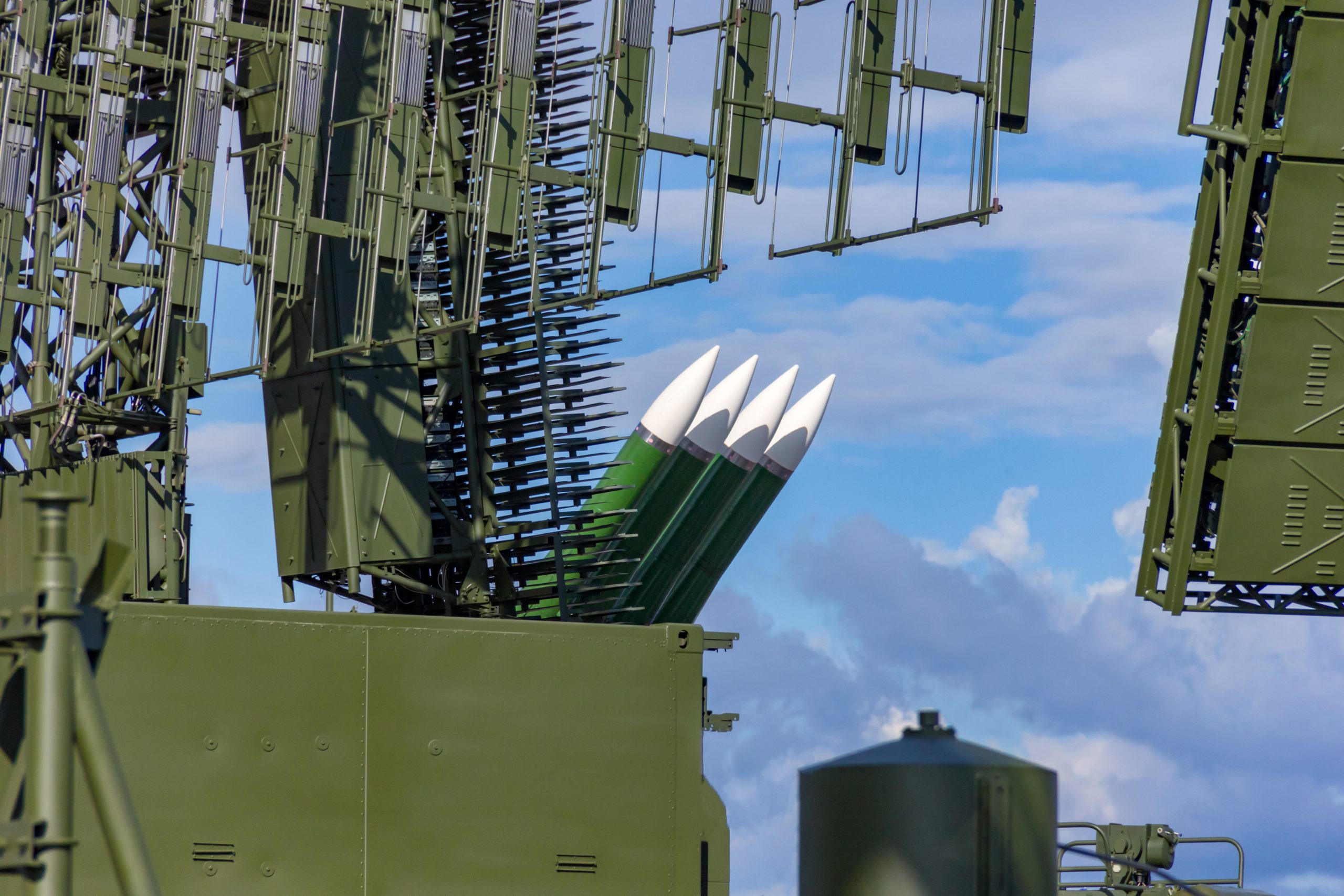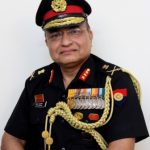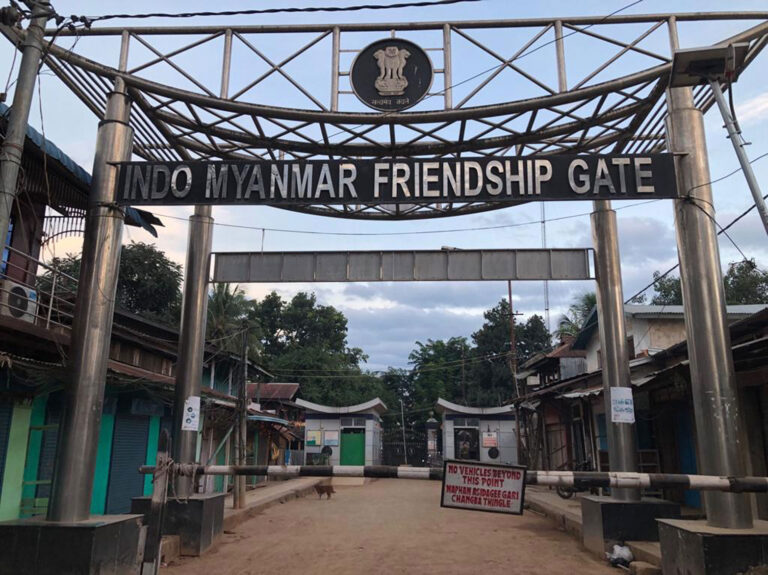
Air Defence Command – A Bold Inititaive
Wed, 31 Mar 2021 | Reading Time: 10 minutes

A well thought out decision
It was not without a very sound reason that the CDS Gen Bipin Rawat chose to announce the creation of the Air Defence Command (ADC) on his very first day in the office. It is indeed a bold initiative. ‘Bold’, because of two main reasons; one, it is unprecedented and much of its implementation as yet lies in the uncharted domain, and two, the ‘strategic importance’ of this decision. Simply stated, the success and failure of this decision will actually decide whether the country is able to put forth its national air defence power as one integrated punch to defeat the adversary’s air threat or the same will get diffused into small penny-packets ripe for attrition by the adversary as stand-alone, disjointed and ad-hoc forces. Such are the stakes involved in this national-level decision.
It will be any day now when the ADC dawns into reality. This work highlights the salient aspects related to it and the action points that lie ahead to make ADC a success. If this test case succeeds, it will and a harbinger for similar changes aimed at bringing major transformation in the Indian Army.
Immediacy and the core purpose of ADC
The high priority accorded to this decision is drawn from its high operational necessity. This aspect is briefly enumerated:-
- Air Defences world over; exist for the sole purpose of countering the air threat from one’s adversaries.
- Such a threat aims to cause damage and destruction to the vulnerable assets of the defender in furtherance of the attacker’s war aims. These could include strategic assets at national level (seat of power, prestigious/heritage infrastructures, dams, ports, critical bridges and the like), core sector assets (refineries, oil dumps, power plants etc.) nuclear assets (reactors, weapons, storage sites etc.) war-waging potential ( was reserves, ammunition dumps, missile storage sites, field force in the battlefield etc.).
- Since the air threat can manifest at land, sea and air either simultaneously or in any combination, it must be countered one-on-one. For doing this, medium-specific air defence capabilities exist on land sea and air respectively.
All the above capabilities existing in different domains need to be integrated for the following reasons:-
- To enable the entire country’s air defences to put up one ‘integrated front’ to counter the common air threat to the nation.
- To ensure that best possible weapon is brought to bear against the incoming threat at any one time during the course of the dynamic air defence battle.
- To cut out duplications and redundancies and ensure the best possible exploitation of high-cost low-population air defence resources.
The main purpose of ADC is to achieve the above end-state.
UNDERSTANDING THE MOST CRITICAL POINT IN THE ADC
A ruinous view.
A view point which perceives the ADC as one flag, one command and one authority under which ‘everything air defence’ must be brow-beaten as a ‘minced meat’ is not only professionally incorrect, but also, ruinous to the very concept of ADC.
The critical point
The truth is, that keeping in mind the peculiar nature of the air defence battle, there are some aspects which need to be integrated with binding glue, while there are others, which must be retained as distinct core-competencies.
THE CRITICAL POINT IN ADC IS TO RETAIN THE DIFFERENCE BETWEEN THE TWO.
An attempt has been made below to explain this difference.
The three anchors of air defence.
Air defence could be perceived to be resting on three anchors, namely, Sensors, Shooters and Controllers. Very basically, the sensors detect the enemy’s air threat, shooters destroy it and Controllers make air defence battle possible. The difference lies in the role of each of these in the overall ‘game-play’ of air defence.
The air defence game play.
As stated, the raison-de-etre for air defence is to defeat the air threat. We face a significant air threat from our potential adversaries, namely, China and Pakistan. This can manifest singly or in malicious cohesion thus giving credence to the much-flogged term, the ‘two-front war’
What are the contours of this threat and what is our strategy to deal with the same should actually decide how the ADC should gear itself to do this task optimally.
Air Threat Re-visited
The air threat that we face from our potential adversaries is multi-platform and multi-dimensional. Some aspects of this threat are enumerated:
- The mainframe attack vehicles of our adversaries are the aircrafts. These mostly comprise of 3rd and 4rth generation machines with a slight sprinkling of the 5th generation. By generation is implied the level of technological evolution in terms of avionics, armaments, communications, navigation and such other features as stealth, survivability, electronic warfare capability and more. The current cutting edge is held by the 5th generation aircrafts.
- Most of the above aircrafts have the combat radii ( range to target and back) to strike deep into the Indian mainland with precision, accuracy and long stand-off ranges ( stand-off implying the capability to launch guided weapons on the targets while remaining away at long ranges from such targets). Salient inventory; Pakistan – JF -17, F-16 JF 17, Mirages III, V etc.; China-J-7, JH-7, J8, J10, J 11, SU-30, H-6, Q5 J20, J31 etc.
- Another force to reckon with the adversaries is the attack helicopters (AH). These are particularly effective against mechanised forces operating in the Tactical Battle Area (TBA). Armed to the teeth, AHs can fly ultra-low along the nap-of-the-earth thus avoiding radar detection and prey on their targets of choice maintaining surprise and deception. Main AH inventory; Pakistan AH 1F, K 8, China – WZ-9, 10, 11, 19, Z-11 etc.).
- China in particular and Pakistan to a lesser degree have a significant muscle in the field of Unmanned Aerial Systems (UAS). These exist in all their manifestations, namely, the intelligence, surveillance, target acquisition and reconnaissance (ISTAR) role, as machines capable of operating with manned platforms in Manned and Unmanned Teaming (MUMT) operations and as swarm drones (China). Main inventory -Pakistan Burraq UAS, ASN 105, ASN 206 etc. China – Wing long, CH3, GJ 1, GJ 2, Anjian etc.).
- We also face a threat from the Surface-to-Surface Missiles (SSMs) of the adversary. The three verticals on which the SSMs stand, namely, warhead, delivery means and command and control structures are reportedly in place. While most of the SSMs can carry conventional warheads, quite a few of them are capable of delivering nuclear weapons. SSMs have ranges to strike deep into the Indian subcontinent and beyond. Pakistan’s SSM ranges 70km (Hatf 1) to 2750 km (Shaheen II) , Chinese SSMs – 700 km ( DF 1) to 12,000+km ( DF 41).
- The other aerial threat vehicles are the cruise missiles. These are capable of sustained powered flight at low level thus avoiding radar detection with the ability to strike with sub-metric accuracy. Pak Cruise missiles- Nasr, Babur. Chinese missiles- CJ 10, YJ 6 etc.
- The air threat package also has anti-radiation missiles (ARMs). Homing on to radar radiations, these missiles are capable of destroying our sensors in a typical operation that is known as Suppression of Enemy Air Defences (SEAD). Major inventory – Pakistan -MAR 1, China- YJ91, KH31P, YJ 93 and more.
- In the soft-kill domain the laser-based aerial weapons are already a reality with China. The ones in the pipeline few years hence will lie in the kill domain of high power microwave weapons and charged particle beam weapons.
- Talking of future the Chinese are actively testing and experimenting with the hypersonic Cruise Missiles or HCM (Starry Sky II), as well as, Hypersonic Glide Vehicles or HGVs (HGV on board DF 17). This threat is however is still beyond the horizon for the immediate factoring.
Countering the Air Threat
In order to deal with such a formidable threat the air defence capabilities at land, sea and air are organised in a particular manner. This is briefly enumerated:-
Weapon Systems
- The air combat power comprising aircrafts, AHs, Missiles, Soft kill weapons along with sensors and control structures etc. is deployed at various air bases. Its employment is flexible and dynamic. This power aims to defeat the air threat not only defensively (through interception upon ingress in our air space), but also, and more importantly, in offensive missions such as counter air operations, deep strike missions etc.
- The Ground Based Air Defence Weapon Systems (GBADWS) are deployed in layered-and-tiered defences based on a theatre grid. Since each weapon has a specific range and altitude envelop of effectiveness, deploying GBADWS in overlapping layers as above, ensures that before the envelop of one weapon cuts off, the other one takes over. Such deployment can bring seamless and successive fire on the air threat without a gap, shifting from weapon-to-weapon.
- In addition to air and ground, the air defence of the fleet at sea is an exclusive naval domain (details not covered).
- The execution of air defence in all the three mediums as described above is the core-competency of each service This competency developed over decades of hands-on experience is not only restricted to the operation of the weapon platforms , but also, and more importantly, the total understanding of the nuances of the battle in the relevant medium.
BMC2 System
- All the above air defence means are tied together by one common thread of Battle Management Command and Control System (BMC2) system, which in the Air defence parlance is called the Air Defence Control and Reporting System or ADCRS.
- ADCRS is the life-line of the air defence battle. It is responsible for the surveillance of the air space, detection of the aerial vehicles and their identification as friendly or hostile. The threat so generated is prioritized based on its comparative lethality and immediacy of impact. Prioritized threat is engaged with the most appropriate weapon. In sum, ADCRS makes the air defence battle happen. In fact, NO AIR DEFENCE WEAPONS FIRE UNLESS CLEARED BY THE ADCRS.
- Indian Air Force (IAF) has been entrusted with the responsibility of providing air defence to the Indian national air space. In execution of this responsibility, it has configured a national level ADCRS system which is called the Integrated Air Command and Control System (IACCS). This system based on SATCOM is a wide area network that provides communication and connectivity from the highest level national command posts right down to the entities controlling weapon platforms.
Stating the most critical point about ADC
Having explained the nuances of the air defence battle , it is now possible to state the most critical point about the ADC which is that while the ADCRS (BMC2) system of air defence must be fully integrated as one, the core-competencies of each service in executing air defence battle in their respective mediums must be retained as distinct capabilities; controlled by one common thread of ADCRS.
OTHER POSSIBLE AREAS OF INTEGARTION UNDER ADC
In addition to the above core integration, following other areas should be integrated under the ADC:-
Air Threat (intelligence)
- ADC must provide one institutional platform for working out the air threat to the nation. This air threat needs to be assessed both in the qualitative terms (meaning technological maturity) as well as, quantitative terms (implying numbers likely to be applied). Today the air threat is being worked out by multiple agencies in the country. All this must yield to a national level assessment (and its regular revision) by the ADC.
Capability Enhancement
- It must become the responsibility of the ADC to draw out national level policies and plans aimed at a progressive and a phased capability enhancement of the air defence of the nation in the immediate/short/medium and long term. What are our voids? What are their comparative priorities? What must be procured and in what time frame, etc.? These are some of the critical inputs that must be provided by the ADC to the 10 year Integrated Capability Plan (ICDP) as laid down in the Defence Acquisition Procedure 2020.
Budget Allocation
- ADC must control all aspects of air defence budget. Activities like assessing demands based on voids , prioritising them , raising demands and receiving funds and most importantly, ensuring the most optimal utilization of the allotted budget independent of service turfs, undue biases and more must all become the responsibility of ADC
Sustenance
- Air defence weapons are very high-cost and low-population equipment. The service life of the complex technological platforms may extend as much as 30-40 years. In order to keep weapon and support systems operationally relevant over such long periods is a herculean task. The execution of this task demands hugely complex activities such as mid-life upgrades, periodic overhauls, life-extension of SAMs, cannibalization of equipment to keep a dying inventory alive etc.
- Laying down national level policies and guidelines for sustenance and making sure that these are implemented in letter-and-spirit must become the responsibility of ADC.
Training
- This is another huge vertical that demands total integration. This integration in no way means amalgamation of the existing training establishments of the three Services into one, what it mean is to lay down national level Training Policies and Training Philosophies that ensure the best possible training of the ‘vayu-rakshaks’ for executing the air defence battle at land, sea and air. It will call for cutting out duplications and redundancies and making sure that the entire training is complementary and cohesive to counter the national air threat.
Inspection
- ADC must take upon itself to lay down one common inspection regime for the air defence units of the whole nation. Method and sequence of inspection, ensuring service-specific content for inspection and a grading/scoring system based on a common set of reference standards must be laid down by the ADC
A WORD ON THE SHAPE OF ADC
Following points are stated regarding the overall configuration of ADC:-
- The ADC must be a tri-Service Command.
- Keeping in mind the overall responsibility of the air defence of the national air space being that of the IAF, it will be in order that the ADC be placed under an Air Force three star officer (C-in-C).
- Similarly, in recognition of the fact that all the three Services are the stake-holders in the execution of the air defence battle, the two Deputy Cs-in-C could be one each from the Core of Army Air defence and Navy respectively.
- Till a more formal and a permanent command and control structure gets formalised under the CDS, ADC could be placed under the Permanent Chairman Chiefs of Staff Committee.
INTEGARTION WITH THEATRE COMMAND
Following points are stated:-
- As and when the theatre commands come up, the ADC will have to be suitably integrated with each.
- For the above, it would be ideal to have an ADC Cell at each Theatre Command under a two-star air defence professional (rotatable among three Services).
- Commander ADC Cell should report directly to the Theatre Commander and be a rep of ADC for all aspects air defence as related to the Command.
- Basically ADC Cell will make two types of air defence allocations. One, (smaller component) an ab-initio fixed allocation of air defence resources of the three Services based on the initial assessment of the Command vulnerabilities and two, (a larger component) a flexible allocation depending upon the flow of the battle and dynamic priorities evolving in time and space.
The ADC is a bold initiative and its success is crucial for the optimal application of the national air defence capability in defeating the air threat to our nation.
Author

Lt Gen (Dr) VK Saxena is the former Director General of the Corps of Army Air Defence. He has been decorated three times by the President of India. Presently, he is the Distinguished Fellow at VIF. The General is a prolific writer who has authored five books and is regularly published by the Defence media of the country. He is also a regular at TV shows contributing on many a defence issues
*************************************************************************************************************
Endnotes
- “CDS aims to set up Air Defence Command…,” at www.indiatoday.in. Accessed on 15 Mar 2021.
- CDS: CDS Bipin Rawat seeks proposal to create air defence command, “at www.economictimes.indiatimes.com. Accessed on 15 Mar 2021.
- India’s air defence :what needs to be integrated,” at www.vifindia.org. Accessed on 17 Mar 2021.
- “Changing contours of air threat..,” at www.vifindia.org. Accessed on 16 Mar 2021.
- 3 ibid . Accessed on 17 Mar 2021.
- “Air defence Command – some salient points and imperatives,” at vifindia.org. Accessed on 18 Mar 2021.
- Air defence command: a step in the right direction,” at www.claws.in. Accessed 0n 19 Mar 2021.
Disclaimer
The opinions expressed in this article are the author’s own and do not reflect the views of Chanakya Forum. All information provided in this article including timeliness, completeness, accuracy, suitability or validity of information referenced therein, is the sole responsibility of the author. www.chanakyaforum.com does not assume any responsibility for the same.
Chanakya Forum is now on . Click here to join our channel (@ChanakyaForum) and stay updated with the latest headlines and articles.
Important
We work round the clock to bring you the finest articles and updates from around the world. There is a team that works tirelessly to ensure that you have a seamless reading experience. But all this costs money. Please support us so that we keep doing what we do best. Happy Reading
Support Us




















POST COMMENTS (1)
joannla60